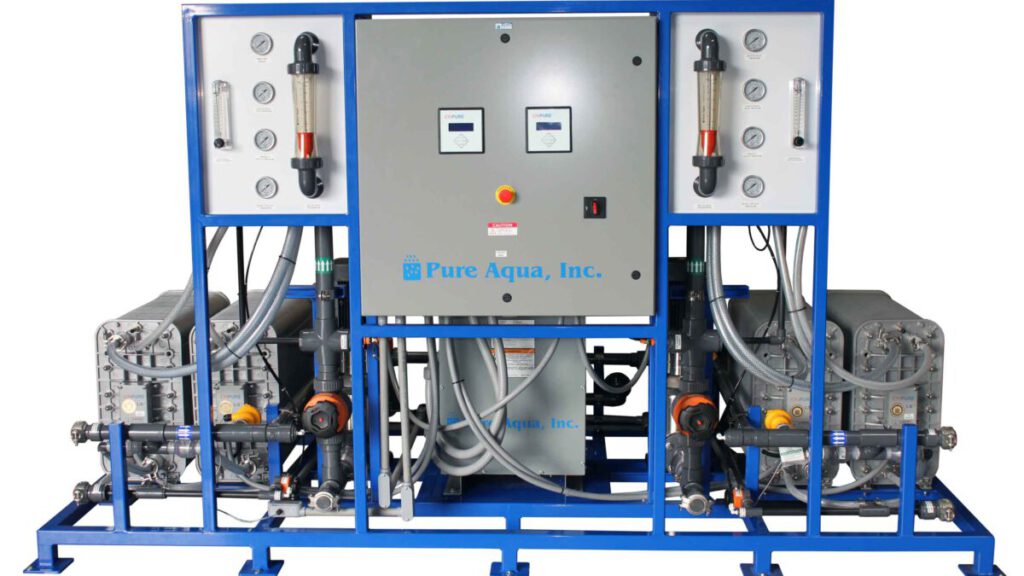Electrodeionization Systems (EDI)

Ozone Systems
September 16, 2023
Surface Piping Systems
September 16, 2023
Electrodeionization (EDI) is an electrically-driven water treatment technology that uses electricity, ion exchange membranes and resin to remove ionized species from water.
How does it work? An EDI stack has the basic structure of a deionization chamber. The chamber contains a ion exchange resin, packed between a cationic exchange membrane and a anionic exchange membrane. Only the ions can pass through the membrane, the water is blocked.
Electrodeionization works in applying functional currents to eradicate ionized substances from water bodies, while simultaneously regrowing the ion exchange media. An EDI water system is usually applied after the usage of a reverse osmosis system or even a double pass ro system.
SPECIFICATIONS
• A complete, power supply assembly \
(NEMA 12 or optional NEMA 4 and 4X)
• Controllers
• Piping
• Sample valves
• Cleaning connections
Flow and quality monitoring instrumentation and remote I/O is available as
an option.
ADVANTAGES
• Reliable, compact design
• Quick installation
• Low maintenance
• Easy validation
• Hot water sanitizable
• (HWS) units available up to 185 °F (85 °C)
• High operating temperature
• (up to 100 psig feed)
• Completely leak-free operation
• Ideal for loop applications
• Low power consumption
• Individual power supplies and controls

